From imposing fortress like structures to simple meditative cells, no other building has dominated the traditional Tibetan landscape like that of the Buddhist monastery. Due to the unique character of Tibetan Buddhism and the physical nature of the Tibetan landscape, Tibetan Buddhist monasteries differ in terms of architecture and spatial arrangement from monasteries found in other Buddhist cultures.
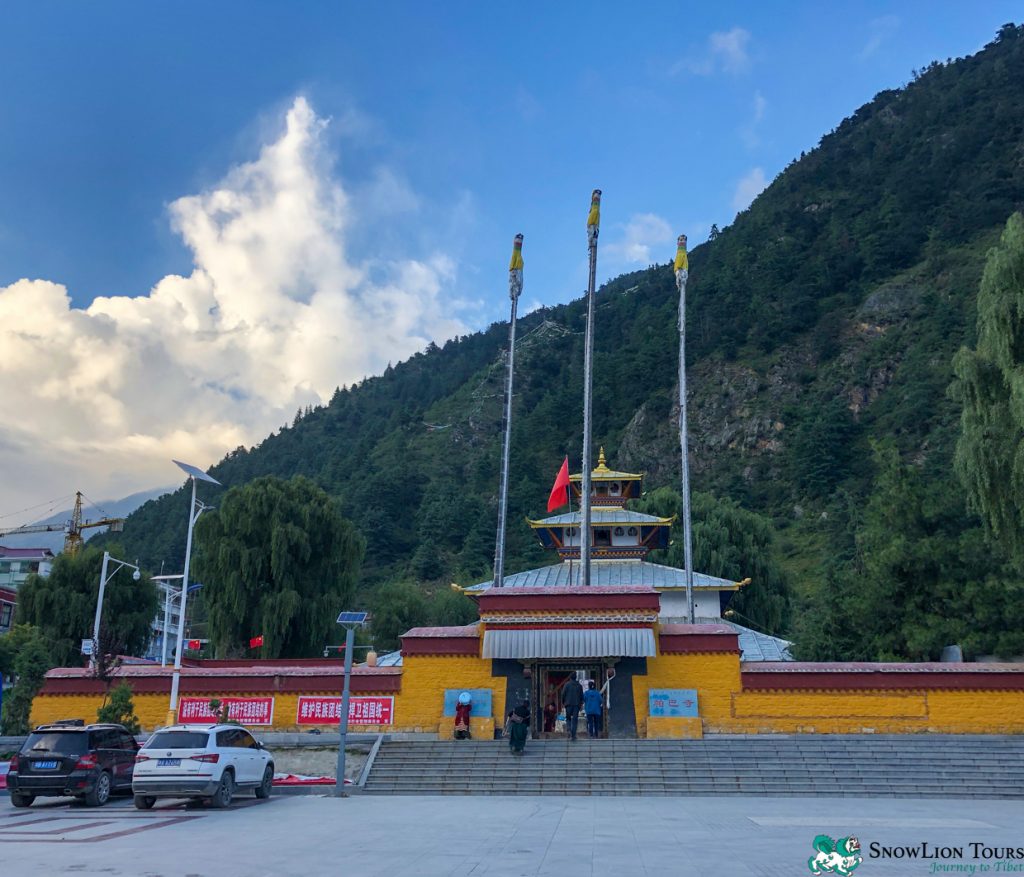
Indian and Nepali style monastery in Kyirong Town at the border between Tibet and Nepal
The Buddhist monastery or vihāra originated in India as a need for shelter when monks gathered during the rainy season. As monasteries became permanent establishments they followed Indian architectural styles. They ranged from thatched huts to cells carved within caves before eventually culminating in the grand monastic university complexes of north eastern India such as Nālandā.
These monastic universities or mahavihāra arose at a time when Vajrayāna or tantric Buddhism was becoming prevalent in India. Many of the early Buddhist teachers and masters to Tibet were teachers or students at these mahavihāra. It was the prescribed layout of these mahavihāra which influenced the development of Tibetan Buddhist monasteries.
To understand the foundational concepts behind the layout of a Tibetan Buddhism monastery it is necessary to understand the role of the mandala in Tibetan Buddhism. The mandala is an iconographic design found in Vajrayāna Buddhism which represents the realm where a Buddha reigns as the supreme monarch.
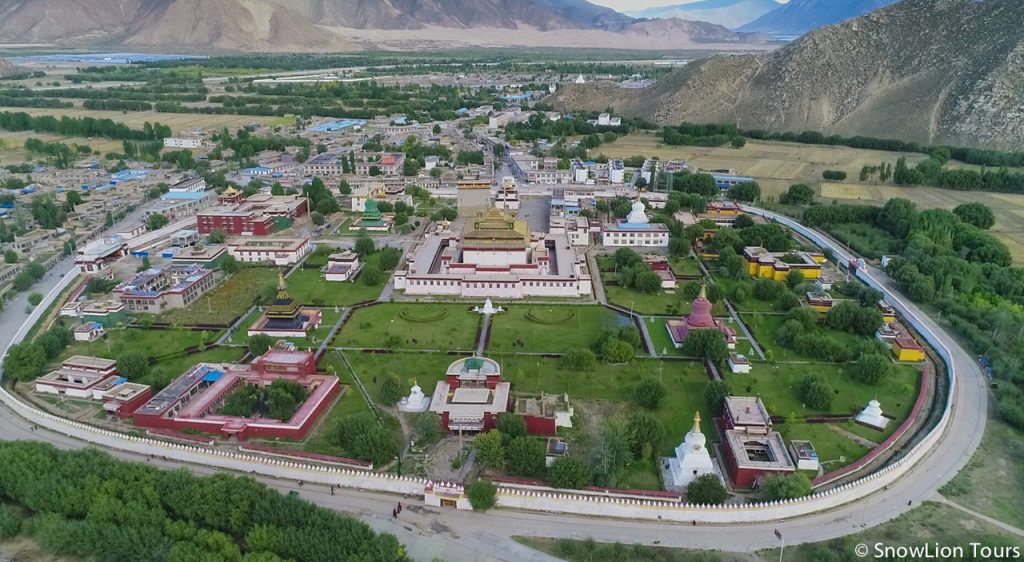
The first Tibet Monastery shaped like a mandala in Tsethang.
At the centre of the mandala is the palace where the enlightened Buddha resides. Surroundings are the residences of deities which assist the Buddha in its role as a monarch. At the outer edge of the mandala are the wild and dangerous regions such as cremation grounds where unstable spirits reside. The mandala is visualised through meditation and through the performance of tantric rituals it is inscribed upon the physical world we live in.
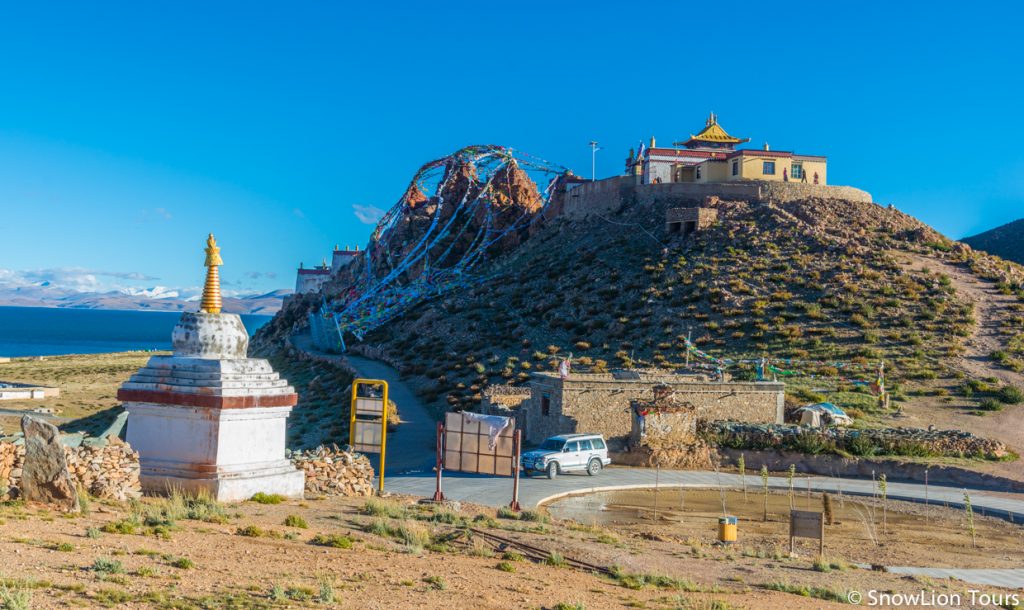
Qiu Monastery at the Lake Manasarovar. A meditation cave based monastery.
The transferring of the mandala of the Buddha onto the physical world is a necessary part of subduing the spirits which live in the surrounding landscape and which may be hostile to the Buddhist dharma. The sadag or spirits that live within the earth are also placated through offerings made prior to construction taking place. Other physical structures found throughout the monastery such as chortens and mani walls are not just for architectural decoration. They assist in subduing the spiritual forces of the landscape which threaten the monastic community and surrounding villages.
Monastic buildings can often be distinguished from their secular counterparts by a traditional Tibetan design known as the benma frieze. Set at the top of most building facades, this crimson frieze is achieved by sticks of tamarisk brush being banded together. A good place to observe this decorative technique up close is Drigung Til monastery.
The first monastery to be built in Tibet during the Yarlung Dynasty, Samye, was arranged in the pattern of a mandala. The site of its construction, a flat valley, ideally allowed for this spatial arrangement. However Tibetan monasteries are not always located in such ideal conditions. Many are built on hillsides. One of the reasons for this is the symbolic relationship between the concept of height and status. Others reasons might have more practical origin. The monastery may have arisen around a mountain cave where a hermit once meditated. A hillside monastery is easy to defend against invading armies or a rival monastery. A troublesome spirit might be located within the vicinity and therefore the monastery acts as a sacred dagger, pinning down the volatile spiritual forces which reside in the prominent aspects of the landscape.
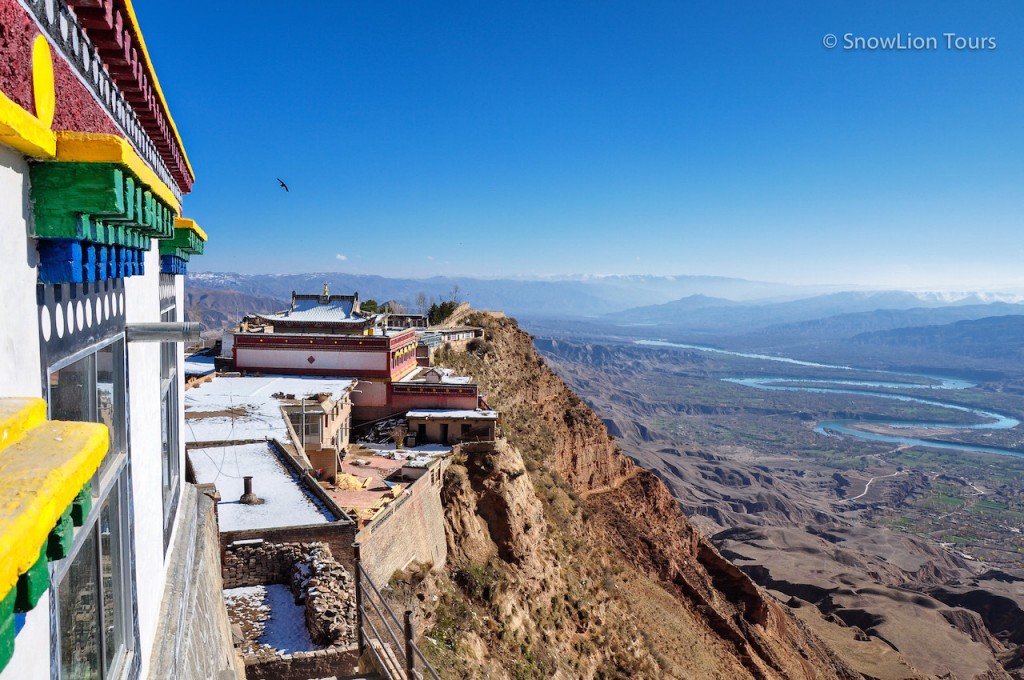
Shachung monastery in Amdo Tibet
Regardless of this, efforts are taken to ensure that the layout is in keeping with the concept of the mandala. At the centre of every monastery is the dukhang or main assembly hall. This is usually the tallest building in the monastery and this is where the daily prayers and main ceremonies taken place. The dukhang will always face south, opening out onto a courtyard where performances are traditionally held. The dukhang continues to represent the concept of spatial hierarchy in that its upper floor sometimes houses the living quarters of the monastery’s highest tulku or incarnate lama.
Surrounding the dukhang are the lesser temples and monastic accommodation quarters. In larger monasteries such as Drepung and Sera the monasteries are divided into colleges which are distinguished by the different yigcha (textbooks) they follow. Within these colleges the monastic accommodation is separated into regional houses. Therefore, monks who come from a particular region or monastery live and study together.
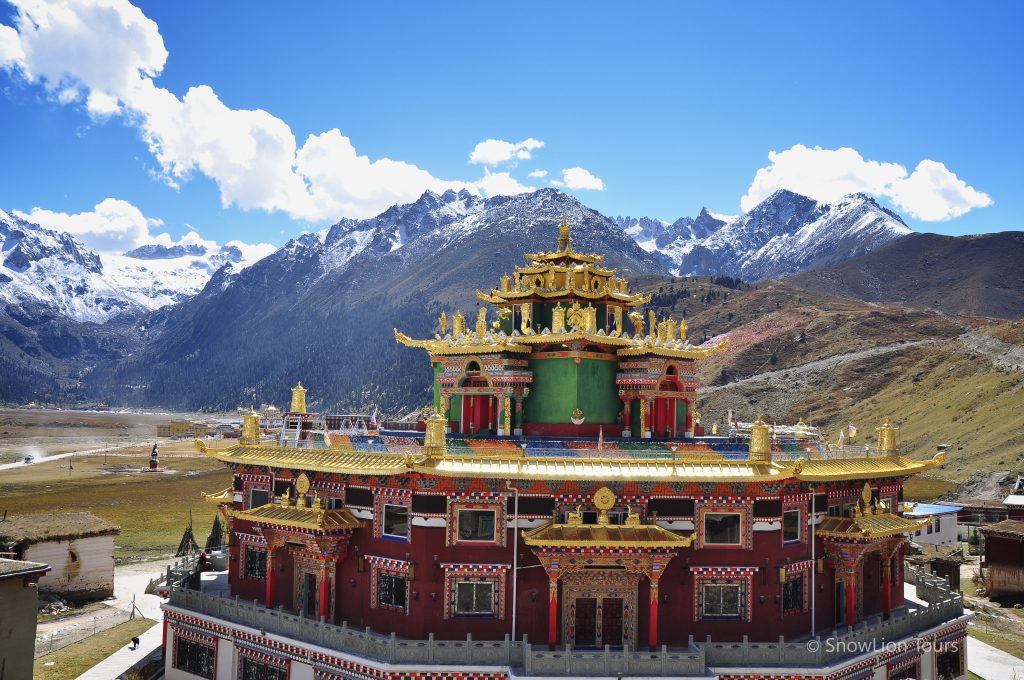
Dzongchen Monastery in Kham
The mandala concept of a typical monastic layout is further noticeable in the fact that most monasteries are surrounded by a circular kora path. The kora path is used by processions of pilgrims to circumambulate the monastery and its shrines. This is performed in order to generate good karma and receive blessings from the holy locations within.
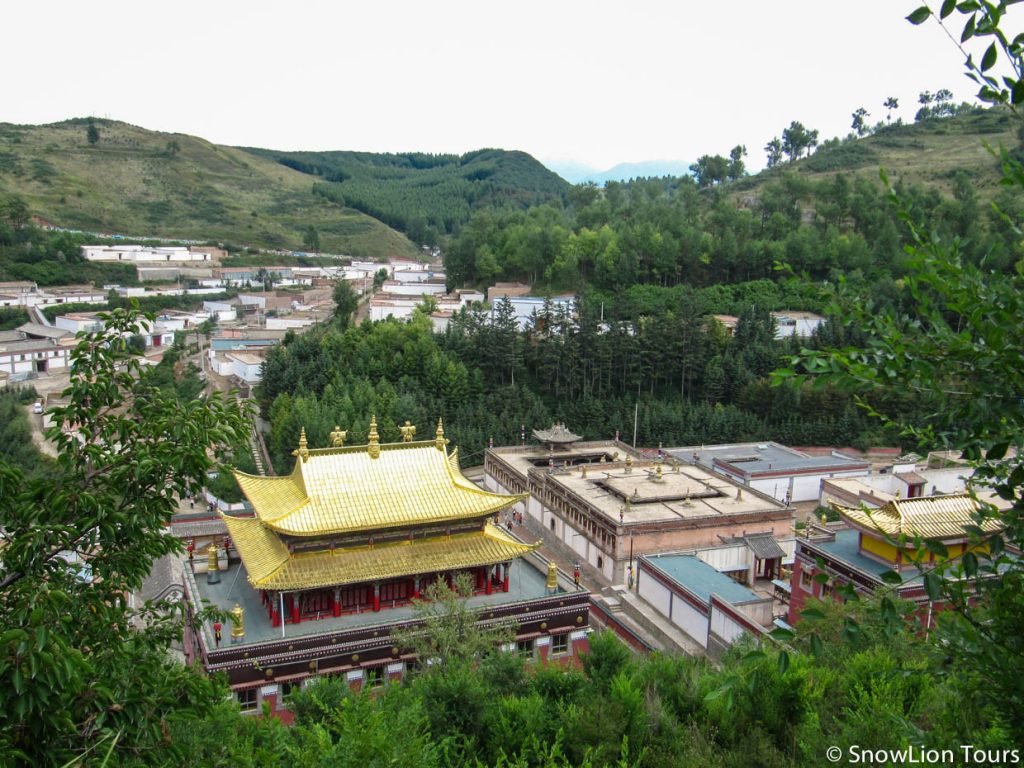
Kumbum Monastery in Amdo
Exceptions to these monasteries with the Indian inspired mandala layout are monasteries in Amdo which have cultural ties to Mongolia and China. Monasteries such as Qutan monastery follow the axial layout found in Chinese Ming Dynasty architecture. Monasteries using this layout differ from the circular mandala layout in that they are arranged in a linear north-south pattern. However, the central building still acts as the main assembly hall.
When visiting Tibetan Buddhist monasteries, it is important to observe the following regulations:
- Ensure that you are dressed respectfully, with your arms and shoulders covered. This applies to both men and women.
- When entering a shrine or temple remove your hat and, if asked, remove your shoes.
- Take care to ensure that you do not step on the door frame.
- When entering a shrine room keep to the left and move around in the room in a clockwise direction.
- Do not touch the statues or paintings.
- Do not sit on the rows of seats reserved for monks.
- Do not point a Buddha’s statue or monk with one finger.
- Do not touch little monks head
- Do not photograph inside a chapel unless it’s permitted.
- Do not photograph monks or nuns up close without asking for permission.
Links to famous monasteries in Tibet
- Sera Monastery (Lhasa)
- Drepung Monastery (Lhasa)
- Toling Monastery (Ngari)
- Tsurphu Monastery(Lhasa)
- Labrang Monastery(Amdo)
- Kumbum Monastery (Amdo)
- Dzogchen Monastery (Kham)
- Serthar Larung Gar (Amdo and Kham)





